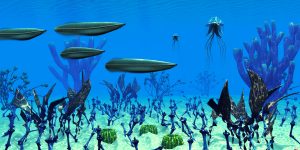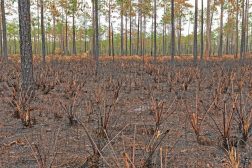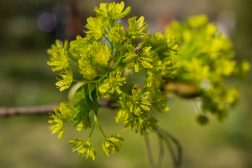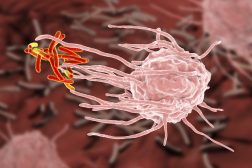Definition
noun, plural: flukes
(1) (ichthyology) Summer flounder, Paralichthys dentatus (a flatfish)
(2) (cetology) Either of the two lobes of the tail of a cetacean, e.g. whales and dolphins
(3) (parasitology) A common name for any of the parasitic flatworms of Class Trematoda of Phylum Platyhelminthes; trematode
Supplement
In ichthyology, a fluke refers to Paralichthys dentatus , which is also commonly called summer flounder. The species belongs to the family Paralichthyidae of class Actinopterygii, phylum Chordata. The species is characterized by having eye-like spots on the body (about 5-14), ability to change color and pattern of the dark side to match surroundings, burrowing in sandy bottoms, sharp teeth, and active predators of sand lance, porgies, squid, shrimp, etc. These flounders are typically found in the Atlantic Ocean.
In cetology, a fluke is an anatomical part of whales and dolphins. In particular, the fluke pertains to either of the two lobes of the tail of whales and dolphins. The flukes are used for propulsion.
In parasitology, a fluke is a common name given to parasitic flatworms of the class Trematoda (trematodes). This taxonomic class of phylum Platyhelminthes (flatworms) is characterized by having external suckers that they use to anchor themselves within their host. There are two groups: tissue flukes and blood flukes. The members of these two groups are classified based on the system of the host that they infest (or infect). The tissue flukes, e.g. Paragonimus westermani, Fasciola hepatica, and Clonorchis sinensis, are those that are found in lungs, bile ducts, and other tissues of their hosts. The blood flukes, e.g. Schistosoma, are those that occur in the blood of their vertebrate host. Humans may also serve as a host to certain trematodes, such as Schistosoma, Clonorchis, Opisthorchis, Fasciola, and Paragonimus species.
Dictionary > Fluke
You will also like...

Arthropods
The arthropods were assumed to be the first taxon of species to possess jointed limbs and exoskeleton, exhibit more adva..

The Conscious & Unconscious Nervous System
This tutorial elaborates on how the nervous system works, particularly at the tissue level of the brain. There are three..

Ecosystem Succession
If the balance of nature is left untouched, landscapes can change dramatically over time. A previous ecosystem is supers..

Gibberellins and Gibberellic Acid
This tutorial describes the role of gibberellin family in plants. Find out the effects of gibberellin on plant growth an..

New Zealand’s Unique Flora
If New Zealand has lots of unique animals, it's also got a whole lot of unique plants. Find out more about some of them,..

Biological Cell Defense
Organisms employ different strategies to boost its defenses against antigens. Humans have an immune system to combat pat..

